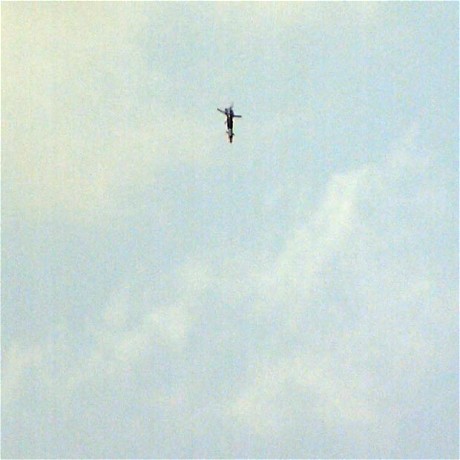
“You are about to see the largest aerial campaign in Libyan history in the coming hours,” Haftar’s air force chief Saqr al-Jaroushi said in a statement.
At least “six Mig-29 Fulcrum and two Sukhoi Su-24 Fencer combat aircraft escorted by two Russian Air Force Su-35s” have arrived in Libya according to the Government of National Accord (GNA) Ministry of Interior Fathi Bashagha.
The aircraft would have been flown into the country from the Russian-controlled Hmeimim Air Base, near Latakia, in northeastern Syria. There haven’t been official confirmations nor satellite images backing this claim although some movements have been observed at Libyan airbases.
Yesterday’s Sentinel-2 image of Al Khadim Air Base, 🇱🇾#Libya, shows three aircraft on ground. This base is just east of #Benghazi in LNA territory.
One of these may be an Ilyushin Il-76, the other two are smaller. pic.twitter.com/YrFo7DjiZZ
— Gerjon | חריון (@Gerjon_) May 21, 2020
The presence of “Russian Air Force Su-35” is particularly surprising, considered that Russia does not participate (officially) in the conflict in Libya. It seems more likely that the Su-35s escorted the MiG-29s and Su-24s (if these have really deployed to Libya) in the first part of their journey from Syria and then returned back to Hmeimim.
Not even clear is the “owner” of the MiGs. Some believe these are the 6 MiG-29s reportedly flown to Syria via Iran last week:
Last week the Записки охотника Telegram Channel said that a Russian Tu-154 aircraft landed in Iran’s Hamadan Airbase as a stop over as it flew from Russian to Syria, and it was escorted by 6 MiG-29 fighters. Presumably, these are the same fighters. 70/https://t.co/rWWaHEmjnX
— Rob Lee (@RALee85) May 21, 2020
Other sources suggest they may be Belariusian Fulcrums:
not sure if russians, my sources are talking about belarussian 9.13, so Mig 29s, probably the version upgraded by ARP558 which looks similar to the SMT but without the dorsal tank
— Secretdifa3 Akram Kharief (@secretdifa3) May 21, 2020
There is also someone who believes the whole story of the deployment is just fake news.
That being said, assuming a contingent of MiG-29s and accompanying Su-24s really deployed to Libya (I’m still not sure this actually happened, at least not the way it has been reported), they are there to back Haftar’s forces, already supported by the UAE, Egypt and Russian mercenaries in the war to take the control Tripoli: launched last year, the campaign to bring down Fajez Serraj and the GNA would have succeeded if the latter hadn’t been helped by Turkey. Since November 2019, the government of Tripoli has been able to reject the attacks from Haftar’s LNA forces, taking also control of the strategic al-Watiya Air Base, 90 miles south of Tripoli. In other words, with the help of the Turkish drones and anti-aircraft systems the GNA has been able to achieve the air superiority in Tripolitania: in the last hours alone, Turkish UAVs have destroyed at least nine Russian “Pantsir” anti-aircraft systems, supplied by UAE to Haftar to protect LNA bases.
What role the MiGs and Sukhois would play in this war is hard to say: while the Su-24s are attack aircraft, the MiG-29s can theoretically be used to carry out counter-UAVs as well as air-to-surface missions. In other words, they may represent a deterrent for Turkish drones that have been used with devastating results by the GNA. However, at the same time, dispatching MiG-29s (flown by mercenaries) in contested airspace with still significant SAM (Surface Air Missile) and MANPADS (Man Portable Air Defense System) threat would expose the fighters to the risk of being targeted, and downed, as happened to other Libya National Army Air Force jets in the skies over Libya’s capital. Anyway, we will see.
Meanwhile, this morning, the command of the Haftar army announced that their air force will launch in the next few hours “the largest air campaign in the history of Libya”, or an attack on the positions of the government of Tripoli, including the Turkish ones.
We will update as more details emerge.
Update:
At least one MiG-29 has been spotted on the ground at al-Jufrah airbase, south of Tripoli.
MiG-29 on the ground at al-Jufrah, 19 May 20. Grid: 29.1916, 16.0112 https://t.co/62By0rSZMC pic.twitter.com/k1Fw7HePOA
— Brian Castner (@Brian_Castner) May 21, 2020



